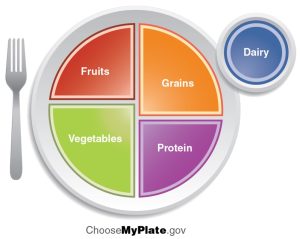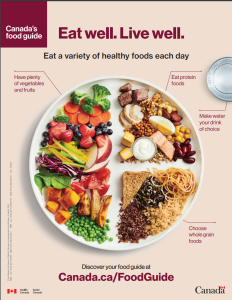Chapter 11 – Nutrition
Calories (Food Energy)
Food energy is measured in kilocalories (kcals), commonly referred to as calories. Although technically incorrect, this terminology is so familiar that it will be used throughout this course. A kilocalorie is the amount of energy needed to raise 1 kilogram of water 1 degree Celsius.
The number of kilocalories per gram for each nutrient is shown below:
| Nutrient | Energy (kcal/g) |
| Carbohydrate | 4 |
| Protein | 4 |
| Lipids (Fat) | 9 |
| Water | 0 |
| Vitamins | 0 |
| Minerals | 0 |
As the table above illustrates, only carbohydrates, protein, and lipids provide energy. However, there is another dietary energy source that is not a nutrient—alcohol. To emphasize, alcohol is not a nutrient, but it does provide 7 kilocalories of energy per gram.
Knowing the number of calories in each nutrient allows a person to calculate/estimate the amount of calories contained in any food consumed.
On average, a person needs 1500 to 2000 calories per day to sustain (or carry out) daily activities. The total number of calories needed by one person is dependent on their body mass, age, height, gender, activity level, and the amount of exercise per day. If exercise is a regular part of one’s day, more calories are required. As a rule, people underestimate the number of calories ingested and overestimate the amount they burn through exercise. This can lead to ingestion of too many calories per day. The accumulation of an extra 3500 calories adds one pound of weight. If an excess of 200 calories per day is ingested, one extra pound of body weight will be gained every 18 days. At that rate, an extra 20 pounds can be gained over the course of a year. Of course, this increase in calories could be offset by increased exercise. Running or jogging one mile burns almost 100 calories.
The type of food ingested also affects the body’s metabolic rate. Processing of carbohydrates requires less energy than processing of proteins. In fact, the breakdown of carbohydrates requires the least amount of energy, whereas the processing of proteins demands the most energy. In general, the amount of calories ingested and the amount of calories burned determines the overall weight. To lose weight, the number of calories burned per day must exceed the number ingested. Calories are in almost everything you ingest, so when considering calorie intake, beverages must also be considered.
Eating Guidelines
Both the Canadian and US government have provided guidelines regarding the types and quantities of food that should be eaten every day. In Canada there is the Food Guide and the USDA guidelines are found at MyPlate. They have both put the recommended elements of a healthy meal into the context of a place setting of food. The accompanying website gives clear recommendations regarding quantity and type of each food that you should consume each day, as well as identifying which foods belong in each category. The accompanying graphics (Figure 11.4 and 11.5) gives a clear visual with general recommendations for a healthy and balanced meal. Both guidelines recommend to “make half your plate fruits and vegetables” while the other half is grains and protein. The Canadian guidelines suggest water as the drink of choice while the USDA suggests dairy.
MyPlate and Canada’s Food Guide


Summary Video
Animated video on Healthy Eating 101

